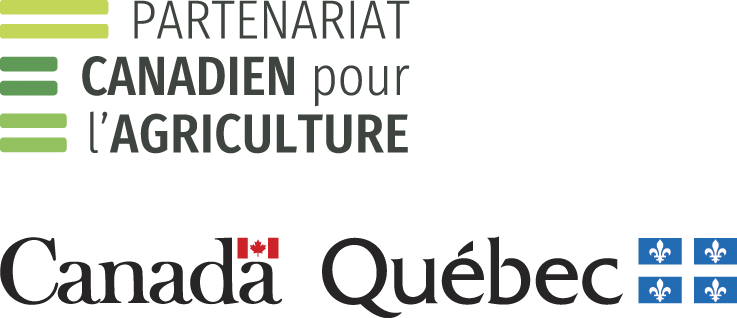Prevention and control of feed contamination
Fusarium graminearum is the most common fungus in crops in Quebec and Canada. The objective of preventive measures in the field and at harvest is to limit its prevalence and proliferation. Every situation is different and the following practical advice does not apply in all circumstances. Assessing the situation with the help of an agronomist is essential to determine the correct response.
Practical advice for the production and storage of grains
Seed selection
- Use healthy seed with non-detectable levels of graminearum. In organic production, randomly test seed lots for contamination.
- Select seed that is resistant to graminearum;
- Choose insect-resistant seed since insect infections promote graminearum contamination of the plant.
- In high-risk situations, the use of seeds treated with a fungicide specific to graminearum could be considered, with the recommendation of an agronomist.
In the field
- Avoid consecutive crops of graminearum-susceptible plants (e.g. wheat, barley or corn) in rotations. A delay of at least 2 years is recommended.
- Because graminearum spores have the ability to move with the wind, avoid planting susceptible crops in nearby fields.
- Increase seeding rates to promote a more uniform stand, reduced tillering and a shorter flowering period for the crop. This strategy reduces the flowering period of the crop, which is the growth stage most at risk for infection. In addition, more uniform plant flowering improves fungicide performance at the time of application.
- Spread out cereal or corn planting between fields to stagger flowering times. This will also extend the timing of fungicide applications to allow for changing weather conditions.
- Control weeds and cereal emergence in infested fields.
- Use the AgWeather and field scouting tools to assess the risk of graminearum development. If the risk is high, use registered fungicides prescribed by an agronomist.
- Sign up for the Réseau d’avertissements phytosanitaires (RAP) (in French only) to stay informed about the situation in your area.
- Ask your agronomist to scout for insect pests and recommend treatment if necessary.
At harvest
- If the crop is contaminated with graminearum, adjust the combine fan to reject contaminated grain. This will limit contamination of the grain with dockage that is relatively high in moisture.
- Ensure even distribution of chopped residue on the ground to promote decomposition and reduce the load of graminearum in the field;
- Clean all equipment before exiting a contaminated field to avoid spreading to other fields.
- Burying residues with tillage allows soil microorganisms to break down graminearum and control the next year’s spread.
- Dry grain quickly to 14.5% moisture content to prevent mold development.
- Ventilate to quickly reduce grain temperature below 15 °C, to limit mold growth.
- Make sure to reduce the temperature of the grain to reduce mold growth. It is important to know that molds need more moisture to grow at lower temperatures.
During storage
- Perform a complete cleaning of the silos with a sweeper, between each harvest, to remove grains and dust possibly contaminated by mold spores.
- Avoid any source of moisture introduction into the grain to prevent hot spots from forming in the mass. Inspect the silos for breakage and make the necessary corrections.
- Detect early signs of fungal activity in stored grain.
- Detect the presence of typical odours indicative of mould growth in the silo, either manually or with an electronic nose.
- Measure the CO2 concentration produced by the mass of grain in the silo. A CO2 concentration greater than 3,000 ppm indicates probable mold growth in the bin, especially if the moisture content is greater than 14.5 %.
- If possible, apply one or several of these measures to reduce the concentration of mycotoxins already present in the grain: sorting, cleaning, hulling, pearling and abrading of grains. Ozone fumigation can also detoxify DON and fumonisin contaminated grain.
*Wear appropriate protective equipment to avoid inhalation of contaminants and injury.
Practical advice for the production and storage of silage
As a rule, established best practices for the production and storage of silages are essential for the production of quality silages and also contribute to limiting the presence and proliferation of mycotoxins:
Seed selection
- Select forage species with a soluble sugar concentration that promotes a rapid increase in lactic acid concentration during the fermentation process. The resulting decrease in pH is a major factor in …
- Select hybrids that are resistant to fungal/mildew diseases.
- Harvest corn silage at the recommended moisture content to ensure optimal fermentation.
In the field
The best practices listed for grain production apply equally to the various silage crops (grass, corn, cereals).
At harvest
- Aim for a minimum cutting height of 10 cm (4 inches) when mowing.
- Use the wide swath technique to accelerate the drying of forages in the field and minimize the period of exposure to air and weather.
- Chop harvested forages to promote compaction during storage and reduce the presence of air in the silo.
- Follow hygiene practices when unloading silage into silos to avoid contamination with the soil.
- Compact hayricks, bunker silos or AgBags to obtain a minimum density of 240 kg of dry matter/m3.
- Follow recommendations about dry matter and fibre size in relation to the size of your tower silos.
- Seal silos, hayricks or round/square bales with plastic to quickly create anaerobic conditions. Especially for horizontal silos and hayricks, an oxygen barrier greatly reduces oxygen penetration into the mass. Above all, don’t forget to repair any holes that may appear.
At feed-out
- Use silos of an appropriate size that allow you to remove fermented silage at a rate sufficient to avoid aerobic spoilage and the development of mold and yeast.
- The feed-out rate of silages should be a minimum of 10 cm in winter and 20-30 cm in summer to avoid mold growth and aerobic spoilage;
- For stack, bunker or bag silos, use proper equipment during feed-out to maintain a smooth and firm silo face. This will reduce contact with oxygen and reduce mold and yeast spoilage.
- The optimal feed-out rate for silages should be a minimum of 10 cm in winter and 20-30 cm in summer to avoid mold growth and aerobic spoilage.
- Use organic acids such as propionic acid to improve aerobic stability, if necessary.
- Use a heterofermentative inoculant such as Lactobacillus buchneri combined with homofermentative inoculants to accelerate the reduction of the pH of the silage, which will prevent the development of molds during feed-out and improve aerobic stability.

This project is funded through the Innov’Action agri-food program under the Canadian Agricultural Partnership, as part of an agreement between the governments of Canada and Quebec.










